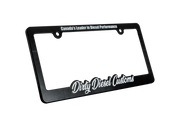Did I Blow My Head Gasket?
If you are asking this question on the internet, you are probably already stressed out about what’s going on with your truck. Here are some things to know before you start tearing your truck apart or shopping around for quotes to get the job done.
The First Signs of Head Gasket Failure
The first thing people usually notice, particularly in the winter, is the heater will start blowing cold air when the engine is up to temperature. We get this call at the shop all the time. The cooling system in your truck consists of anywhere between 18-26 liters of coolant (depending on your engine) the water pump will flow the coolant through your engine, and into your cab to provide warmth for your heater. It will then flow back out to your radiator to cool it down once it reaches operating temperature. The heater core in your dash is one of the highest points of this system, so as you lose coolant, or exhaust gases push into your system, the heater core is where they get trapped, therefore, your losing the coolant flow to your heater core resulting in a malfunctioning heater core and a cold cab.
If it’s in the summer months and you’re not using the heater or if you haven’t lost enough coolant for the heat to be noticeable, another way to check is by feeling the radiator hose. If it’s rock hard, or, if you’re seeing coolant pushing past the reservoir cap it may be time to start thinking about budgeting for some parts or labor.
What Causes This?
There are a couple of things in today’s trucks that can cause the above issues to happen. With most newer trucks running an EGR system, the cooler itself is using coolant to cool the exhaust gases, and if your cooler happens to crack internally, it can cause the same signs as a blown head gasket as it’s allowing exhaust gas into the coolant system. However, when an EGR cooler cracks, it will force exhaust into your coolant system when the truck is under load, but when you are at idle and there is no exhaust pressure (or the truck was just shut off) the coolant will flow into the EGR cooler due to the coolant pressure being higher than the exhaust.
The coolant that flows into your EGR cooler will either be burnt up in the exhaust side, or flow into the intake side and be burnt through the engine when the EGR valve is open. On the older trucks this will cause white smoke and is pretty easy to diagnose, but on the newer trucks with a DPF system, it won’t be as obvious. This is because the DPF will actually trap smoke in the filter and stop it from pouring out the back of the truck for everyone to see. You’ll notice that your truck is starting to perform its regen cycle far more often as the coolant is plugging up the DPF filter quicker than it normally would. You can check this on your truck by removing the EGR cooler and inspecting it for coolant.
If your DPF has been removed, then it’s again, easy to diagnose the issue. This is a failure we have come to expect from the 6.0L Ford Engines, however, that’s not to say it doesn’t happen on other trucks. It can happen to any of them. If the EGR system isn’t the cause of the problem, it’s most likely that the issue is coming from a head gasket that has begun to leak. Today’s diesel engines make a lot of power, and with great power comes extreme cylinder pressures. When your injectors fire and spray all that fuel into your cylinders, the energy expelled on your pistons is massive, and sometimes it’s simply too much. The pressure will find the weak spot in the combustion seal on your head gasket and work its way into your cooling system. Most diesel trucks use a multi-layer metal gasket between the cylinder head and the block so they won’t actually blow apart like a soft graphoil head gasket used in old gasoline engines. Instead, the combustion will start to sneak through between the layers of your metal gasket and will begin to pressurize the coolant system. The cap on your cooling system is designed to hold up to 15-20 psi (again, depending on the truck), and when that pressure gets over that, the relief inside the cap will start letting that excess pressure off. The combustion is coming from a low point in the engine and forms as a big air pocket, this air pocket will push up and force the coolant to blow out of the radiator cap.
Where’s the White Smoke?
Unlike the old gasoline motors with that soft head gasket I was talking about; diesel engines will not burn the coolant when the gasket is blown. In gasoline world, your cylinders are under vacuum when the piston goes down to suck in the air, with a softer gasket that has a leak, the coolant will also be pulled into the cylinder and be burnt up when the cylinder fires.
First of all, on any diesel engine, the intake side is never under vacuum, but either way, the coolant is not getting into the cylinders. Think about it. Your head gasket is designed to handle the thousands of pounds of pressure that your combustion chamber is seeing at any given time the truck is running, that measly 15-20psi of coolant pressure is no match for that multi-layer head gasket. This means you will not have coolant in your combustion chamber as most people expect but the opposite, you’ll have your combustion gases in your coolant system.
How Do I Fix It?
Whether you are going to fix it at home or have a shop do it, unfortunately, it’s never an easy or cheap job. There are a lot of parts involved and you don’t want to be doing it more than once, so here’s how we perform the job at Dirty Diesel Customs to make sure it won’t happen again.
On Ford and GM trucks, we will pull the cab off. Yes, I know you can do it in the cab, but this is one of those situations where tearing it down more makes the rest of the job FAR easier and to ensure we are getting everything back together clean and straight.
Once the cab is in the air we take the top end of the engine apart, clean up the heads, and take them to our local machine shop for the heads to be crack checked, pressure tested and decked. Decking the head is when they take the gasket surface and plane it down a few thousandths of an inch to get a fresh, straight and clean surface for that new gasket to sit on. Even if the head is perfectly straight, we will take off as little as we can, but make sure we have a perfect surface, as we’ve seen the head corroded bad enough that the new gasket just can’t seal on the surface. If you’re doing this at home, we can’t emphasize enough how important it is to have your heads properly machined and decked.
At the shop, we won’t put any head on without the use of ARP Head Studs. ARP studs will hold far greater than any stock bolt will hold, and even on a stock horsepower truck, do you really want to put it together with the bolts that just let you down in the first place? In the case of a head gasket or any job where you’re working on internals, it’s better to overbuild. They aren’t cheap, but we can assure you, they’re much cheaper than doing the job twice.
Once we have the heads back and confirmed they are okay, we clean the engine block, inspect the pistons and cylinder bores. We use a special straight edge to confirm that the block deck hasn’t warped from any overheating. We have seen trucks come in where the block is warped bad enough, that even with new head gaskets and studs, the problem will continue due to a bad block surface. Once that is confirmed good, we will re-assemble with OEM gaskets from MAHLE (MAHLE makes most of the gaskets for the Engine Manufacturers). Torque up the heads with the studs and re-assemble the top end. Put the cab back down if needed and test drive to confirm the repair. It’s summed up pretty quick, but a lot of hours go into this task and ensuring that it’s done right.
Which Trucks Are The Worst?
Not to be ‘truckist’, but there are a few trucks that have unfortunate luck with head gaskets compared to others. In the GM world, the 2004.5-2005 LLY engine seems to be the worst for having gasket failures. These years seem to have temperature issues and I believe it’s because of this, that we see these trucks more than any other Duramax for head gasket issues. We have replaced gaskets on every platform of Duramax, but the LLY seems to be the most common culprit.
- 2001-2004 LB7 Duramax DIY Headgasket Kit
- 2004.5-2005 LLY Duramax DIY Headgasket Kit
- 2006-2010 LBZ & LMM Duramax DIY Headgasket Kit
- 2011-2016 LML Duramax DIY Headgasket Kit
For Dodge owners, the 2007.5-2012 trucks with the 6.7L Cummins are the ones that we see the most. With the introduction of the VGT turbo and the insane exhaust pressure that turbo can create, these years have been known to have head gasket issues. In the case of the 6.7L, the ARP Custom Aged Head Studs are the only ones we will install to battle those pressures.

And of course we can’t forget the Ford guys, and as we have probably all heard, the 6.0L is the worst engine on the market for blowing head gaskets. The 6.4L isn’t far behind, as we see them with head gasket failures quite often in the higher horsepower trucks, but that 6.0L has one of the worst reputations for head gasket issues. That being said, once the 6.0L has been studded and had the appropriate updates, they are one of the more fun trucks to drive on the street!

Doing It Yourself?
We know, doing a head gasket job yourself can be a little daunting, so we put together a few kits to help you source the right parts for your truck. Whether you are just looking for the bare minimum, like the basic kit, or the complete kit with every gasket, update, and upgrade you will need, we have a kit to set you up. If you are looking for something specific, we can always build you a kit to fit the job just drop a comment or give us a call.
Hopefully, this has shed a little light on the head gasket questions you may have had, and steer you in the right direction. If it does happen to you, just think of how much fun you will have with your truck once it’s been studded and you can pour the power into it instead of worrying about buying more coolant.






